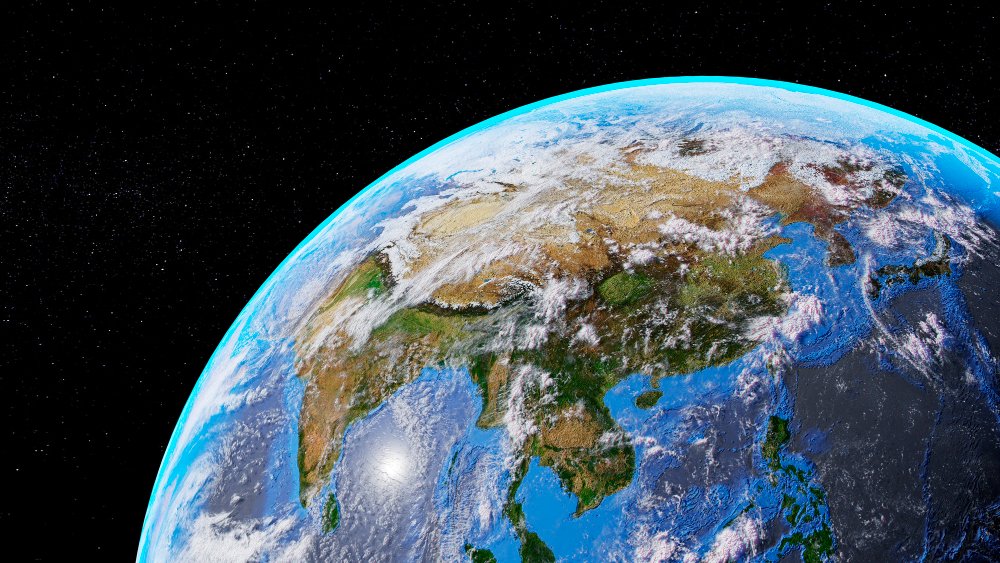Facts About Earth
Introduction
Earth, our beautiful and diverse home, is a fascinating celestial body that holds countless wonders. From its intricate ecosystems to its geological marvels, there are endless facts about Earth that will leave you in awe. In this article, we will delve into some of the most captivating aspects of our planet, shedding light on its formation, characteristics, and the extraordinary life it harbors.
What Is Earth Made Of?
- Earth is primarily composed of rock and metal. Its inner core, a solid sphere approximately 1,200 kilometers (750 miles) in radius, is made up of solid iron and nickel. Surrounding the inner core is the outer core, which is molten and responsible for generating Earth’s magnetic field.
- Above the core lies the mantle, a thick layer of semi-solid rock rich in silicate minerals. This layer accounts for about 84% of Earth’s total volume and is responsible for plate tectonics, volcanic activity, and the movement of the continents.
- The outermost layer is called the crust, which is relatively thin and comprises both land and oceanic regions. The continental crust, primarily composed of granite rocks, is thicker and less dense than the oceanic crust, which consists mostly of basalt.
Earth’s Unique Atmosphere
The Gaseous Envelope
Earth is enveloped by a remarkable atmosphere, a vital component that sustains life as we know it. Here are some intriguing facts about Earth’s atmosphere:
- Composition: The atmosphere is composed primarily of nitrogen (78%) and oxygen (21%). Trace amounts of other gases, such as carbon dioxide, water vapor, and noble gases, make up the remaining percentage.
- The Ozone Layer: The ozone layer, situated in the stratosphere, protects life on Earth from harmful ultraviolet (UV) radiation. It acts as a shield by absorbing and dispersing UV rays, preventing them from reaching the surface.
- Weather Systems: Earth’s atmosphere plays a crucial role in the formation of weather systems. The interplay between solar radiation, air pressure, temperature, and humidity leads to the creation of various weather phenomena, including rain, thunderstorms, and hurricanes.
The Water Cycle
- Water covers approximately 71% of Earth’s surface, with the majority contained within its oceans. This vast body of water plays a fundamental role in regulating the planet’s climate and supporting diverse ecosystems.
- The water cycle is a continuous process through which water circulates between the Earth’s surface, the atmosphere, and back again. It involves processes such as evaporation, condensation, precipitation, and runoff.
Earth’s Breathtaking Biodiversity
Ecosystems and Habitats
- Earth is teeming with a remarkable variety of ecosystems, ranging from lush rainforests to barren deserts, from expansive grasslands to icy tundra. Each ecosystem provides a unique set of conditions that support diverse flora and fauna.
- Biodiversity Hotspots: Certain regions of the world are renowned for their exceptional biodiversity. These hotspots, such as the Amazon rainforest and the Coral Triangle, harbor an astounding array of species found nowhere else on Earth.
Species Diversity
- Millions of species call Earth their home. While the exact number is uncertain, scientists estimate that there may be anywhere between 8.7 and 30 million species on our planet.
- Insects: Insects make up the largest group of animals on Earth, with over a million known species. They play essential roles in pollination, decomposition, and nutrient cycling.
- Marine Life: Earth’s oceans are home to an incredible diversity of marine life, from microscopic plankton to magnificent whales. Coral reefs, often referred to as the “rainforests of the sea,” support an abundance of species and provide vital habitats.
The Geological Marvels
Mountains and Volcanoes
- The Earth’s surface is adorned with majestic mountain ranges that have been shaped by tectonic forces over millions of years. The tallest peak, Mount Everest, reaches a staggering height of 8,848 meters (29,029 feet) above sea level.
- Volcanic Activity: Earth is a geologically active planet with numerous volcanoes dotting its surface. Volcanic eruptions not only reshape the landscape but also contribute to the formation of new landmasses.
The Ring of Fire
- The Pacific Ring of Fire, a region encircling the Pacific Ocean, is notorious for its intense volcanic and seismic activity. This area is home to approximately 75% of the world’s active volcanoes and is prone to frequent earthquakes.
Conclusion
As we explore the vast array of facts about Earth, it becomes clear that our planet is a truly remarkable and awe-inspiring place. From its complex geology to its diverse ecosystems, Earth is a testament to the wonders of the natural world. As inhabitants of this extraordinary planet, it is our responsibility to cherish and protect it for future generations to come.
So, the next time you gaze at the night sky or marvel at the beauty of a sunset, remember that you are part of this incredible planet called Earth.








